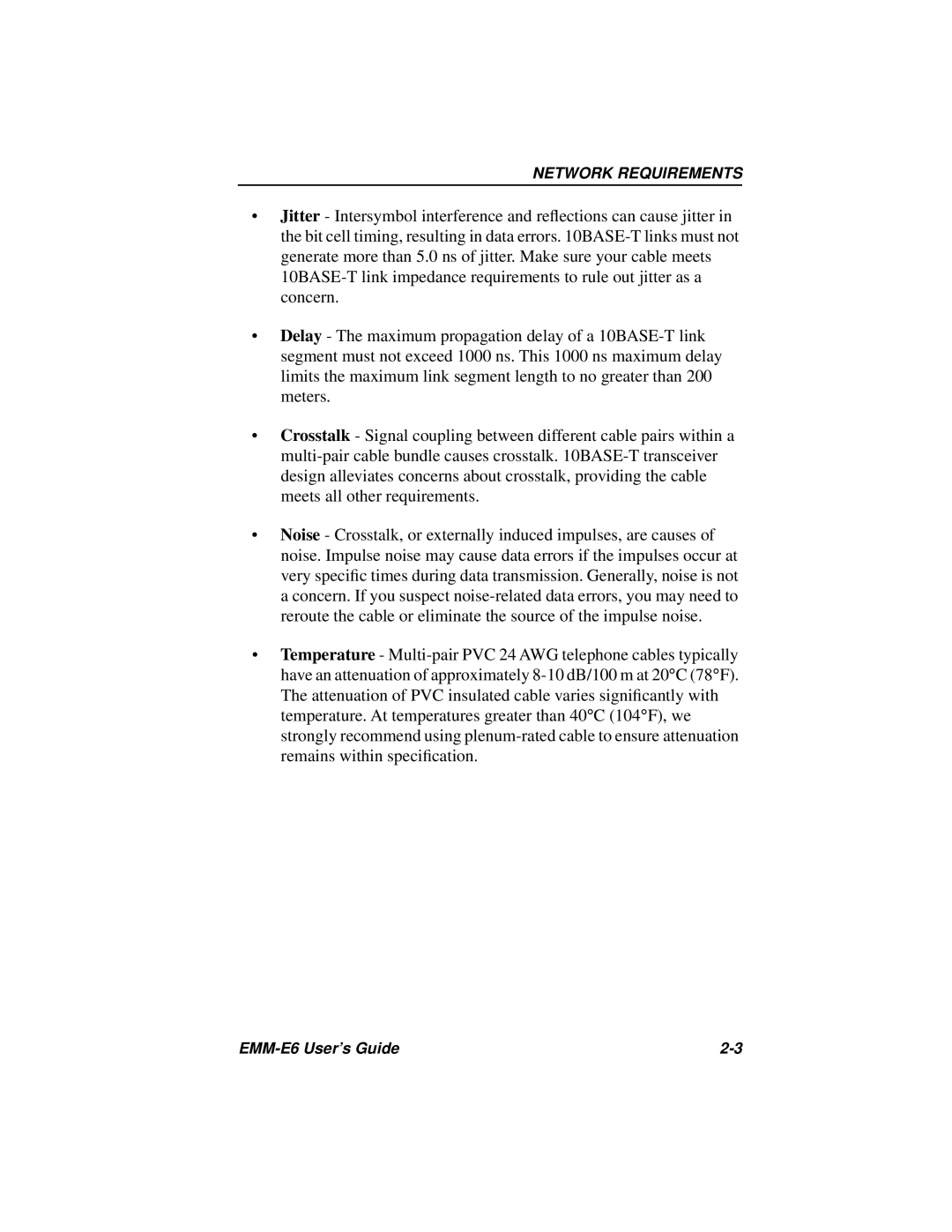
NETWORK REQUIREMENTS
•Jitter - Intersymbol interference and reflections can cause jitter in the bit cell timing, resulting in data errors. 10BASE-T links must not generate more than 5.0 ns of jitter. Make sure your cable meets 10BASE-T link impedance requirements to rule out jitter as a concern.
•Delay - The maximum propagation delay of a 10BASE-T link segment must not exceed 1000 ns. This 1000 ns maximum delay limits the maximum link segment length to no greater than 200 meters.
•Crosstalk - Signal coupling between different cable pairs within a multi-pair cable bundle causes crosstalk. 10BASE-T transceiver design alleviates concerns about crosstalk, providing the cable meets all other requirements.
•Noise - Crosstalk, or externally induced impulses, are causes of noise. Impulse noise may cause data errors if the impulses occur at very specific times during data transmission. Generally, noise is not a concern. If you suspect noise-related data errors, you may need to reroute the cable or eliminate the source of the impulse noise.
•Temperature - Multi-pair PVC 24 AWG telephone cables typically have an attenuation of approximately 8-10 dB/100 m at 20°C (78°F).
The attenuation of PVC insulated cable varies significantly with temperature. At temperatures greater than 40°C (104°F), we strongly recommend using plenum-rated cable to ensure attenuation remains within specification.
